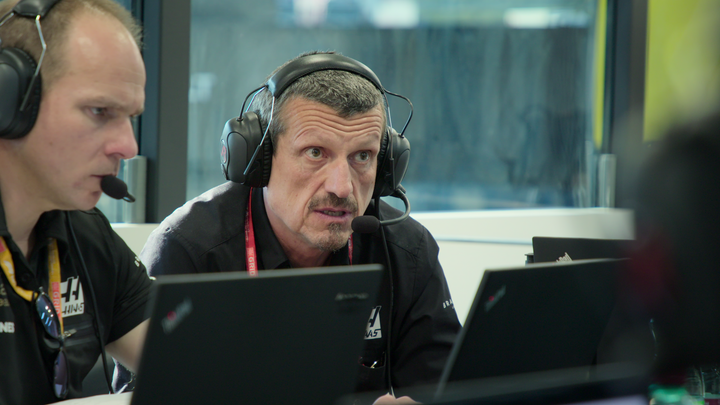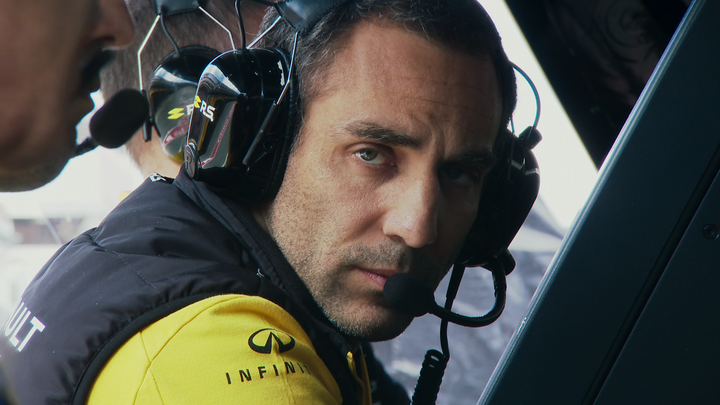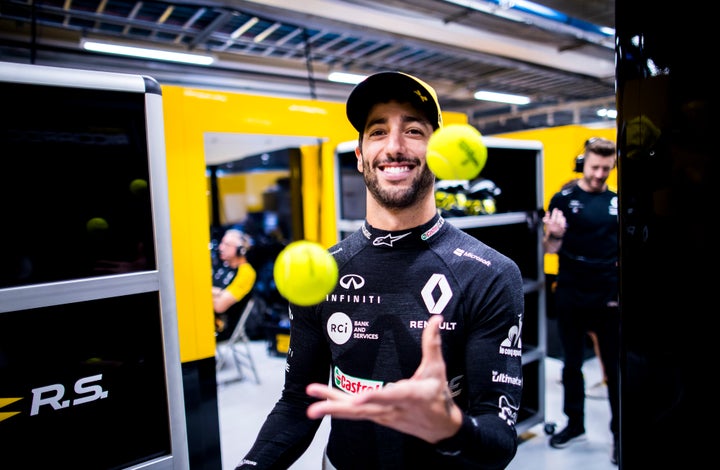Even if you don’t know the sport, you’ll understand the backstabbing.
In many workplaces, there’s an unspoken truth that who you know matters more than what you do when it comes to being successful. But in Netflix’s open-wheel racing reality show “Formula 1: Drive To Survive,” workplace politics is no unspoken secret.
Don’t let the beautiful race backdrops of verdant Belgian hillsides and yachts in Monaco fool you: Formula 1 is a ruthless, hyper-competitive workplace.
As someone who didn’t know anything about the sport before bingeing the show, I found it to be refreshingly direct in dispelling the myth that hard work speaks for itself. Working hard doesn’t automatically lead to success for drivers who are dealing with a poorly built car or a team that wants to replace them for someone more “sellable” to sponsors. This workplace is not a meritocracy; the more money a team has, the better its car will typically be, and the more likely it is to go faster.
“Cash is king,” says seven-time world champion Lewis Hamilton, the sport’s most famous face, in one episode. In Formula 1 these days, it’s totally common for a billionaire sponsor to sweep in and keep a team afloat in exchange for his son securing a spot as a driver.
“This is no magic, this sport,” says Guenther Steiner, team principal of the cash-strapped and perennial loser Haas team in one conversation. “This sport is hard work, fucking dedication, and money to keep it all going.”
Steiner would know; in one memorable scene, he poses in front of toy boats and saunas for a brochure of one of Haas’ sponsors, the discount supermarket chain Aldi. “I’m not too proud to do these things,” he says. It’s true and hilarious.

The Netflix series, which so far has covered seasons from 2018-2021 in four seasons of television, is so popular that viewership of F1 races in the U.S. spiked 41% in 2021.
I can understand why. What makes Formula 1 an entertaining soap opera is the circus of team principals whose egos war with ambitious drivers and billionaire stakeholders. When asked by his pop star wife Geri Halliwell to name his favorite driver, Red Bull Racing boss Christian Horner answers, “Whoever is winning for us.”
The drivers are the stars, but we also see polished public relations representatives looming over their charges, engineers trapped in tense meetings with team principals after a technical failure and pit crews gasping in horror when a car crashes.
The show is not without faults. Red Bull driver Max Verstappen stopped participating after seeing early episodes, telling The Associated Press that the series has “faked a few rivalries which they don’t really exist.” And the show makes glaring omissions about sketchy sponsors and sexual harassment allegations.
But overall, it’s a show that depicts messy interpersonal team dynamics in a unique way I have not seen anywhere else. You may not be in the driver’s seat of an expensive, elite Formula 1 car, but there are compelling management case studies we can all learn from.
It’s a case study in how people learn from failure — and how they don’t.
In F1, teams deal with constant reminders that they are only as good as their last race.
In one brutal example, rising star Alex Albon replaces struggling Pierre Gasly in the Red Bull Racing team. A team photographer shows Albon a promo photo of Gasly in his Red Bull racing suit, telling Albon, “We just have to shoot you in a similar pose, because we’re going to remove that subject and put you in place.” It’s an oblique way of saying, “We’re Photoshopping out the guy being demoted and editing you in,” and a stark reminder of drivers’ replaceability.
In this volatile environment, it’s no wonder that so many drivers buckle under the pressure.
To feel psychologically safe at work, we have to feel free to speak up and share bad news without fear of blame. But most of us — including F1 drivers, who often blame things like bad weather and their engines for their poor performance — have what is known as “fundamental attribution error,” by which we minimize our own role in a failure and place outsized blame on external or situational factors. When we sidestep accountability, we prevent ourselves from learning.
Some teams talk about addressing this. Mercedes’ team principal Toto Wolff says his organization has a “no-blame” culture and doesn’t point fingers when things go wrong, but as the team who has the world’s most-winning F1 driver in Hamilton, I was less than convinced by his pep talks.
It’s much more interesting to watch the rallying tactics of teams that know they do not have competitive cars. Steiner, who greets perpetual failures with optimism, first curses and bluntly names what goes wrong. “We look like a bunch of fucking wankers,” he tells team owner Gene Haas after a poor outing. Meanwhile, Jost Capito, who becomes Williams Racing’s CEO in Season 4, shares that his team has to do a daily “walk of shame” past all the others because for each race, team hubs are assigned locations in order of success.
“It’s physically painful to pass all the teams ahead of you. I told the team they have always to do the whole walk and stop at the point where they want to be next year,” Capito says. “Every single time you walk through the paddock, it gives you the pure reality check of where you are.“
The first step to learning from failure is to accept the reality of it happening.
It shows the limits of being loyal to an employer or employee.
Time and time again, people call F1 a family, but these families frequently break up for business demands. Case in point: Haas drivers Romain Grosjean and Kevin Magnusson. Steiner calls them part of the longstanding Haas “family” in an F1 media session in Season 3, but when money runs dry, he cuts them both for drivers that will bring more sponsorship money. It’s a reminder of how the bottom line ultimately determines who stays and who gets fired. Drivers with the pedigree of a famous or rich family have an advantage.
In Season 3 of the show, Sergio “Checo” Pérez comes to the rude realization that he is being replaced on his current team for Sebastian Vettel, a previous world champion with a bigger name, even though Perez is having a career-best year and had a great job review. “I felt the decision had nothing to do with performance,” he says.
In a good family, your inclusion is not conditional, but in a business, it can be.
Of course, putting business moves before personal camaraderie goes both ways. In Season 3, Renault driver Daniel Ricciardo announces he’s signed up with Renault’s biggest competitor, McLaren, citing the realization he cannot win in a Renault if all cars finish a race.
But Ricciardo still needs to finish the rest of the season with Renault before switching teams. Red Bull team principal Christian Horner likens the situation to a girlfriend staying in your house after a split.
Renault team principal Cyril Abiteboul admits, “With the breakup, there was a period of time where we’ve not spoken … I am emotional. I am not going to change what I am.”

There is an awkward scene in the show where we watch the pair greet each other, but Abiteboul does not linger and keeps walking away. “Oh wow,” Ricciardo sighs after the frigid interaction with his boss.
Eventually, Abiteboul and Ricciardo make up, and at the end of the season, Abiteboul gets a tattoo to fulfill a bet with Ricciardo. The work relationship is ultimately repaired, but it’s a lesson to bosses everywhere: Loyalty to a brand is conditional upon an employer’s performance, too.
The series showcases how hard it is to sacrifice your ambition for the team’s needs.
Formula 1 has 10 teams that each have two drivers responsible for bringing in points for the team based on how fast they finish. Yet despite this shared responsibility, it’s typical for an F1 driver to groan when their teammate is doing a good job, because it puts their own seat in jeopardy.
When Ricciardo is the hot new driver on the Renault team in Season 2, he frankly states, “You don’t want your teammate to come in and ruin your career early … There might always be a little threat whenever you have a new teammate.”

Some drivers are more collegial to their teammates than others, but none of the drivers actively practice “Shine Theory,” a term coined by Aminatou Sow and Ann Friedman. Shine theory is when professionals mutually invest in each other’s careers, even if they are technically competitors, because they do not see that person’s success as a personal threat.
“Shine Theory is an investment, over the long term, in helping someone be their best self — and relying on their help in return,” as Friedman and Sow explain it on their website. “It is a conscious decision to bring your full self to your friendships, and to not let insecurity or envy ravage them.“
In Formula 1, team drivers pose united in front of cameras, but alone with the camera, they are frank about the threat they believe a successful teammate poses. There’s only so much they are willing to do to help a teammate do well on the track.
In Season 4, Ricciardo is struggling on his new team at McLaren, and he is the one feeling threatened by a hot young driver. But his teammate Lando Norris has no sympathy for Daniel not being able to come to grips with the car. “What I said is the just the truth,” he says after an article is written about his lack of sympathy for Ricciardo’s struggles. “I don’t feel sympathy for him. Why should I? No driver on the grid would feel sympathy for another driver.”
The tension between what’s good for driver’s careers and what’s good for a team’s championship chances guarantees dysfunctional work partnerships when teams are losing. But it certainly makes for great TV.
Credit: Source link